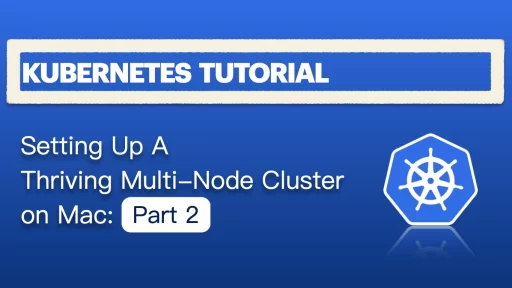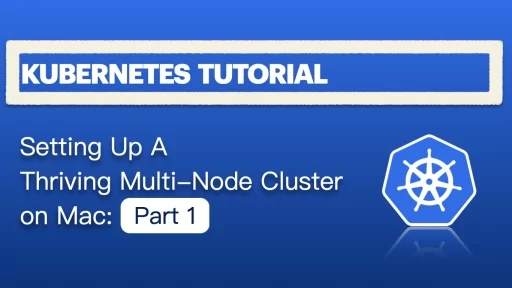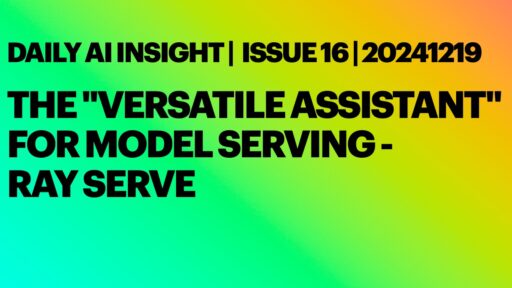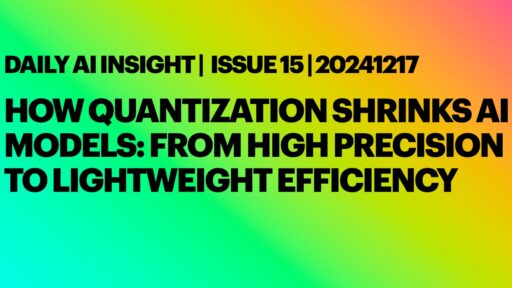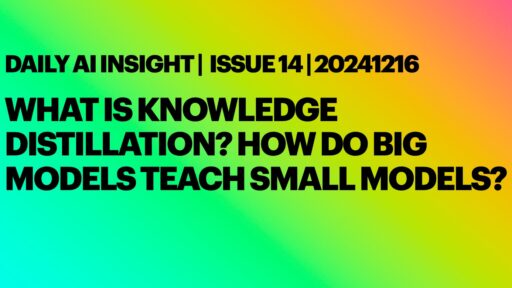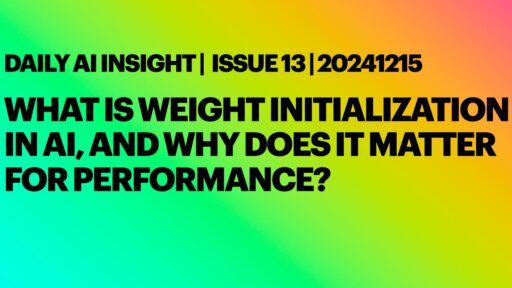Introduction Hey there! Ready to take this Kubernetes setup to the next level? 🚀 In Part 1, we got our base VM image up and running—nice work! Now, in Part 2, I am going to clone that image to set up a local server as a DNS server and NTP server. I was considering to incorporate the steps to setup Kubernetes master and worker nodes, but seems too much. Anyway, a real cluster is coming soon! 😎 Excited? Let’s dive in and make some magic happen. 🔥 Create localserver VM Clone from Base Image Rocky 9 vmrun clone /Users/geekcoding101.com/Virtual\ Machines.localized/baseimage-rocky9.vmwarevm/baseimage-rocky9.vmx /Users/geekcoding101.com/Virtual\ Machines.localized/localserver.vmwarevm/localserver.vmx full sed -i '' 's/displayName = "Clone of baseimage-rocky9"/displayName = "localserver"/' "/Users/geekcoding101.com/Virtual Machines.localized/localserver.vmwarevm/localserver.vmx" cat "/Users/geekcoding101.com/Virtual Machines.localized/localserver.vmwarevm/localserver.vmx" | grep disp Above commands is to clone the base VM image (display name in VMFusion is Clone of baseimage-rocky9) as a new one, then update the display name of the new VM to localserver instead of Clone of baseimage-rocky9. Now, you probably need to run a scan in VMware Fusion to see the newly added VM: Customize the Local Server VM First, stop the baseimage VM and start the localserver VM to avoid network conflict. Now we can SSH as root into the localserver VM by using the IP172.16.211.3 of the base VM. Remember the script /opt/share_tools/bin/configure_vm.yml we created in Ultimate Kubernetes Tutorial - Setting Up a Thriving Multi-Node Cluster on Mac: Part 1. Let's preapre the input file /opt/share_tools/init_data/localserver_vm_input.json: { "hostname": "localserver", "ip": "172.16.211.100", "subnet": "24", "gateway": "172.16.211.2", "dns1": "8.8.8.8", "dns2": "8.8.4.4", "domain": "dev.geekcoding101local.com", "ansible_key_path": "~/.ssh/ansible_ed25519", "ssh_key_path": "~/.ssh/ssh_ed25519" } I…
Introduction Hey there! Welcome to this Kubernetes tutorial! Ever dreamed of running a real multi-node Kubernetes (K8s) cluster on your laptop instead of settling for Minikube’s diet version? A proper real multi-node Kubernetes environment requires virtual machines, and until last year, VMware Fusion was a paid product—an obstacle for many. I know there are alternatives, like KVM, Oracle VirtualBox, and even Minikube’s so-called multi-node mode ----but let’s be real: I’ve got a beast of a MacBook Pro, so why not flex its muscles and spin up a legit multi-node cluster? 🚀 But great news! On November 11, 2024, VMware announced that Fusion and Workstation are now free for all users! The moment I stumbled upon this announcement, I was thrilled. Time to roll up my sleeves, fire up some VMs, and make this cluster a reality. Kick off my Kubernetes tutorial! Let’s dive in! 🚀 Project Overview My Goal In this series of Kubernetes tutorial, I want to set up a full Kubernetes cluster on my MacBook Pro using VMware Fusion, creating multiple VMs to simulate real-world deployment and practice my DevOps and IaC (Infrastructure as Code) skills. Planned Setup Create a VM as Base VM (Rocky Linux 9) Configure networking Update system packages Disable firewalld Enable SSH passwordless login from local Mac to the base VM Set up zsh, tmux, vim and common aliases Install Miniforge for Python environment management Install and configure Ansible Set up a Local Server Node (localserver) Clone from the above base VM image Create an Ansible script to customize the base VM image withe new…
Transformers Demystified - Day 2 - Unlocking the Genius of Self-Attention and AI's Greatest Breakthrough
Transformers are changing the AI landscape, and it all began with the groundbreaking paper "Attention is All You Need." Today, I explore the Introduction and Background sections of the paper, uncovering the limitations of traditional RNNs, the power of self-attention, and the importance of parallelization in modern AI models. Dive in to learn how Transformers revolutionized sequence modeling and transduction tasks! 1. Introduction Sentence 1: Recurrent neural networks, long short-term memory [13] and gated recurrent [7] neural networks in particular, have been firmly established as state-of-the-art approaches in sequence modeling and transduction problems such as language modeling and machine translation [35, 2, 5]. Explanation (like for an elementary school student): There are special types of AI models called Recurrent Neural Networks (RNNs) that are like people who can remember things from the past while working on something new. Long Short-Term Memory (LSTM) and Gated Recurrent Units (GRUs) are improved versions of RNNs. These models are the best performers (state-of-the-art) for tasks where you need to process sequences, like predicting the next word in a sentence (language modeling) or translating text from one language to another (machine translation). Key terms explained: Recurrent Neural Networks (RNNs): Models designed to handle sequential data (like sentences, time series). Analogy: Imagine reading a book where each sentence depends on the one before it. An RNN processes the book one sentence at a time, remembering earlier ones. Further Reading: RNNs on Wikipedia Long Short-Term Memory (LSTM): A type of RNN that solves the problem of forgetting important past information. Analogy: LSTMs are like a memory-keeper that…
Below is a comprehensive table of key terms used in the paper "Attention is All You Need," along with their English and Chinese translations. Where applicable, links to external resources are provided for further reading. English Term Chinese Translation Explanation Link Encoder 编码器 The component that processes input sequences. Decoder 解码器 The component that generates output sequences. Attention Mechanism 注意力机制 Measures relationships between sequence elements. Attention Mechanism Explained Self-Attention 自注意力 Focuses on dependencies within a single sequence. Masked Self-Attention 掩码自注意力 Prevents the decoder from seeing future tokens. Multi-Head Attention 多头注意力 Combines multiple attention layers for better modeling. Positional Encoding 位置编码 Adds positional information to embeddings. Residual Connection 残差连接 Shortcut connections to improve gradient flow. Layer Normalization 层归一化 Stabilizes training by normalizing inputs. Layer Normalization Details Feed-Forward Neural Network (FFNN) 前馈神经网络 Processes data independently of sequence order. Feed-Forward Networks in NLP Recurrent Neural Network (RNN) 循环神经网络 Processes sequences step-by-step, maintaining state. RNN Basics Convolutional Neural Network (CNN) 卷积神经网络 Uses convolutions to extract features from input data. CNN Overview Parallelization 并行化 Performing multiple computations simultaneously. BLEU (Bilingual Evaluation Understudy) 双语评估替代 A metric for evaluating the accuracy of translations. Understanding BLEU This table provides a solid foundation for understanding the technical terms used in the "Attention is All You Need" paper. If you have questions or want to dive deeper into any term, the linked resources are a great place to start!
Today marks the beginning of my adventure into one of the most groundbreaking papers in AI for transformer: "Attention is All You Need" by Vaswani et al. If you’ve ever been curious about how modern language models like GPT or BERT work, this is where it all started. It’s like diving into the DNA of transformers — the core architecture behind many AI marvels today. What I’ve learned so far has completely blown my mind, so let’s break it down step by step. I’ll keep it fun, insightful, and bite-sized so you can learn alongside me! From today, I plan to study one or two pages of this paper daily and share my learning highlights right here. Day 1: The Abstract The abstract of "Attention is All You Need" sets the stage for the paper’s groundbreaking contributions. Here’s what I’ve uncovered today about the Transformer architecture: The Problem with Traditional Models: Most traditional sequence models rely on Recurrent Neural Networks (RNNs) or Convolutional Neural Networks (CNNs). These models have limitations: RNNs are slow due to sequential processing and lack parallelization. CNNs struggle to capture long-range dependencies effectively. Transformer’s Proposal: The paper introduces the Transformer, a new architecture that uses only Attention Mechanisms while completely removing recurrence and convolution. This approach makes transformers faster and more efficient. Experimental Results: On WMT 2014 English-German translation, the Transformer achieves a BLEU score of 28.4, surpassing previous models by over 2 BLEU points. WMT (Workshop on Machine Translation) is a benchmark competition for translation models, and this task involves translating English text into German.…
Groundbreaking News: OpenAI Unveils o3 and o3 Mini with Stunning ARC-AGI Performance
On December 20, 2024, OpenAI concluded its 12-day "OpenAI Christmas Gifts" campaign by revealing two groundbreaking models: o3 and o3 mini. At the same time, the ARC Prize organization announced OpenAI's remarkable performance on the ARC-AGI benchmark. The o3 system scored a breakthrough 75.7% on the Semi-Private Evaluation Set, with a staggering 87.5% in high-compute mode (using 172x compute resources). This achievement marks an unprecedented leap in AI's ability to adapt to novel tasks, setting a new milestone in generative AI development. The o3 Series: From Innovation to Breakthrough OpenAI CEO Sam Altman had hinted that this release would feature “big updates” and some “stocking stuffers.” The o3 series clearly falls into the former category. Both o3 and o3 mini represent a pioneering step towards 2025, showcasing exceptional reasoning capabilities and redefining the possibilities of AI systems. ARC-AGI Performance: A Milestone Achievement for o3 The o3 system demonstrated its capabilities on the ARC-AGI benchmark, achieving 75.7% in efficient mode and 87.5% in high-compute mode. These scores represent a major leap in AI's ability to generalize and adapt to novel tasks, far surpassing previous generative AI models. What is ARC-AGI? ARC-AGI (AI Readiness Challenge for Artificial General Intelligence) is a benchmark specifically designed to test AI's adaptability and generalization. Its tasks are uniquely crafted: Simple for humans: Tasks like logical reasoning and problem-solving. Challenging for AI: Especially when models haven’t been explicitly trained on similar data. o3’s performance highlights a significant improvement in tackling new tasks, with its high-compute configuration setting a new standard at 87.5%. How o3 Outshines Traditional LLMs:…
Ray Serve is a cutting-edge model serving library built on the Ray framework, designed to simplify and scale AI model deployment. Whether you’re chaining models in sequence, running them in parallel, or dynamically routing requests, Ray Serve excels at handling complex, distributed inference pipelines. Unlike Ollama or FastAPI, it combines ease of use with powerful scaling, multi-model management, and Pythonic APIs. In this post, we’ll explore how Ray Serve compares to other solutions and why it stands out for large-scale, multi-node AI serving. Before Introducing Ray Serve, We Need to Understand Ray What is Ray? Ray is an open-source distributed computing framework that provides the core tools and components for building and running distributed applications. Its goal is to enable developers to easily scale single-machine programs to distributed environments, supporting high-performance tasks such as distributed model training, large-scale data processing, and distributed inference. Core Modules of Ray Ray Core The foundation of Ray, providing distributed scheduling, task execution, and resource management. Allows Python functions to be seamlessly transformed into distributed tasks using the @ray.remote decorator. Ideal for distributed data processing and computation-intensive workloads. Ray Libraries Built on top of Ray Core, these are specialized tools designed for specific tasks. Examples include: Ray Tune: For hyperparameter search and experiment optimization. Ray Train: For distributed model training. Ray Serve: For distributed model serving. Ray Data: For large-scale data and stream processing. In simpler terms, Ray Core is the underlying engine, while the various tools (like Ray Serve) are specific modules built on top of it to handle specific functionalities. Now Let’s Talk…
Quantization is a transformative AI optimization technique that compresses models by reducing precision from high-bit floating-point numbers (e.g., FP32) to low-bit integers (e.g., INT8). This process significantly decreases storage requirements, speeds up inference, and enables deployment on resource-constrained devices like mobile phones or IoT systems—all while retaining close-to-original performance. Let’s explore why it is essential, how it works, and its real-world applications. Why Do AI Models Need to Be Slimmed Down? AI models are growing exponentially in size, with models like GPT-4 containing hundreds of billions of parameters. While their performance is impressive, this scale brings challenges: High Computational Costs: Large models require expensive hardware like GPUs or TPUs, with significant power consumption. Slow Inference Speed: Real-time applications, such as voice assistants or autonomous driving, demand fast responses that large models struggle to provide. Deployment Constraints: Limited memory and compute power on mobile or IoT devices make running large models impractical. The Problem How can we preserve the capabilities of large models while making them lightweight and efficient? The Solution Quantization. This optimization method compresses models to improve efficiency without sacrificing much performance. What Is It? It reduces the precision of AI model parameters (weights) and intermediate results (activations) from high-precision formats like FP32 to lower-precision formats like FP16 or INT8. Simplified Analogy It is like compressing an image: Original Image (High Precision): High resolution, large file size, slow to load. Compressed Image (Low Precision): Smaller file size with slightly lower quality but faster and more efficient. How Does It Work? The key is representing parameters and activations using fewer…
Knowledge Distillation in AI is a powerful method where large models (teacher models) transfer their knowledge to smaller, efficient models (student models). This technique enables AI to retain high performance while reducing computational costs, speeding up inference, and facilitating deployment on resource-constrained devices like mobile phones and edge systems. By mimicking the outputs of teacher models, student models deliver lightweight, optimized solutions ideal for real-world applications. Let’s explore how knowledge distillation works and why it’s transforming modern AI. 1. What Is Knowledge Distillation? Knowledge distillation is a technique where a large model (Teacher Model) transfers its knowledge to a smaller model (Student Model). The goal is to compress the large model’s capabilities into a lightweight version that is faster, more efficient, and easier to deploy, while retaining high performance. Think of a teacher (large model) simplifying complex ideas for a student (small model). The teacher provides not just the answers but also insights into how the answers were derived, allowing the student to replicate the process efficiently. The illustration from Knowledge Distillation: A Survey explained it: Another figure is from A Survey on Knowledge Distillation of Large Language Models: 2. Why Is Knowledge Distillation Important? Large models (e.g., GPT-4) are powerful but have significant limitations: High Computational Costs: Require expensive hardware and energy to run. Deployment Challenges: Difficult to use on mobile devices or edge systems. Slow Inference: Unsuitable for real-time applications like voice assistants. Knowledge distillation helps address these issues by: Reducing Model Size: Smaller models require fewer resources. Improving Speed: Faster inference makes them ideal for resource-constrained environments.…
Weight Initialization in AI plays a crucial role in ensuring effective neural network training. It determines the starting values for connections (weights) in a model, significantly influencing training speed, stability, and overall performance. Proper weight initialization prevents issues like vanishing or exploding gradients, accelerates convergence, and helps models achieve better results. Whether you’re working with Xavier, He, or orthogonal initialization, understanding these methods is essential for building high-performance AI systems. 1. What Is Weight Initialization? Weight initialization is the process of assigning initial values to the weights of a neural network before training begins. These weights determine how neurons are connected and how much influence each connection has. While the values will be adjusted during training, their starting points can significantly impact the network’s ability to learn effectively. Think of weight initialization as choosing your starting point for a journey. A good starting point (proper initialization) puts you on the right path for a smooth trip. A bad starting point (poor initialization) may lead to delays, detours, or even getting lost altogether. 2. Why Is Weight Initialization Important? The quality of weight initialization directly affects several key aspects of model training: (1) Training Speed Poor initialization can slow down the model’s ability to learn by causing redundant or inefficient updates. Good initialization accelerates convergence, meaning the model learns faster. (2) Gradient Behavior Vanishing Gradients: If weights are initialized too small, gradients shrink as they propagate backward, making it difficult for deeper layers to update. Exploding Gradients: If weights are initialized too large, gradients grow exponentially, leading to instability during training.…
